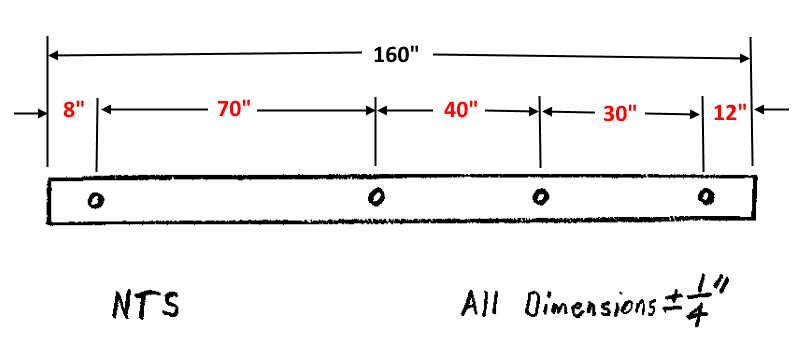Jimstructures -
retired13's interpretation of "double dimension" is spot-on and has caused many needless errors.
There is another type of "double dimension" error, also. That is, dimensioning a drawing in a way that can be interpreted in more than one way. I have sketched a simple example, a beam with holes in the web, shown below:
Case 1: Is the beam supposed to be 160"
+ 1/4" long?
Case 2: Or, are the holes supposed to be the specified dimensions apart (shown in red) with a tolerance of
+ 1/4" for each spacing?
If Case 2, say that each of the (red) dimensions is
-1/4"... the tolerance deviation for each measurement is acceptable but the deviations are cumulative. The net result is the beams is not 160" long, it is 1 1/4" shorter (158 3/4" long).
On the jobsite, the short beam is blamed on fabricator error... but the engineer could have prevented the error by proper dimensioning.
Surprising thing is that both case 1 and case 2 could be the proper interpretation and the solution is simple:
Case 1: If the beam is supposed to be 160"
+ 1/4", make one of the spacing, say, the 12" dimension a reference dimension.
Case 2: If each spacing is supposed to be as specified
+ 1/4", make beam length (160") a reference dimension.
This is the engineer's decision and should be made and stated on the drawings.
Note: I know this is kind of nit picking, and on real projects rarely matters, but the
OP's question concerns how to manage cumulative tolerance deviations. My point is that by
thinking during the design process, the engineer can create an unambiguous design as the first step toward a solution.
![[idea] [idea] [idea]](/data/assets/smilies/idea.gif)

![[idea] [idea] [idea]](/data/assets/smilies/idea.gif)
